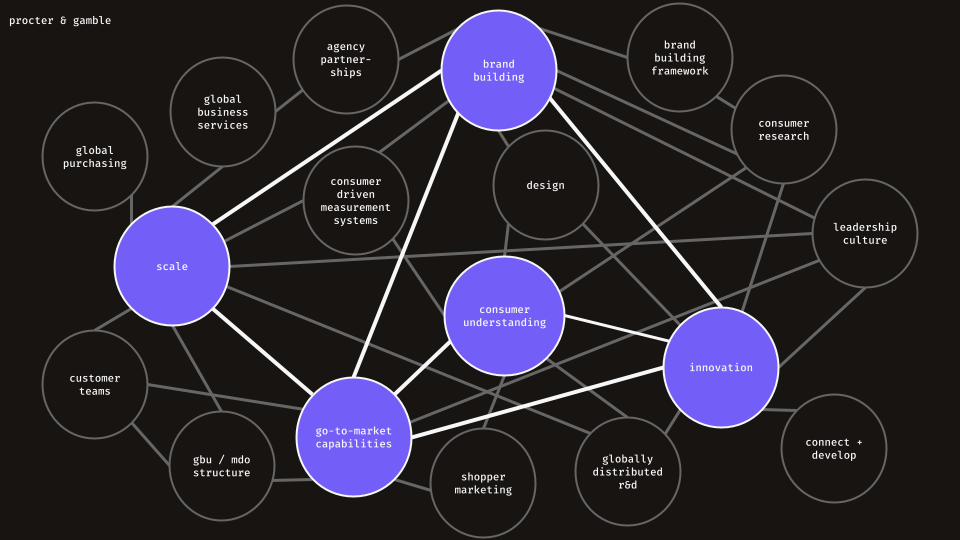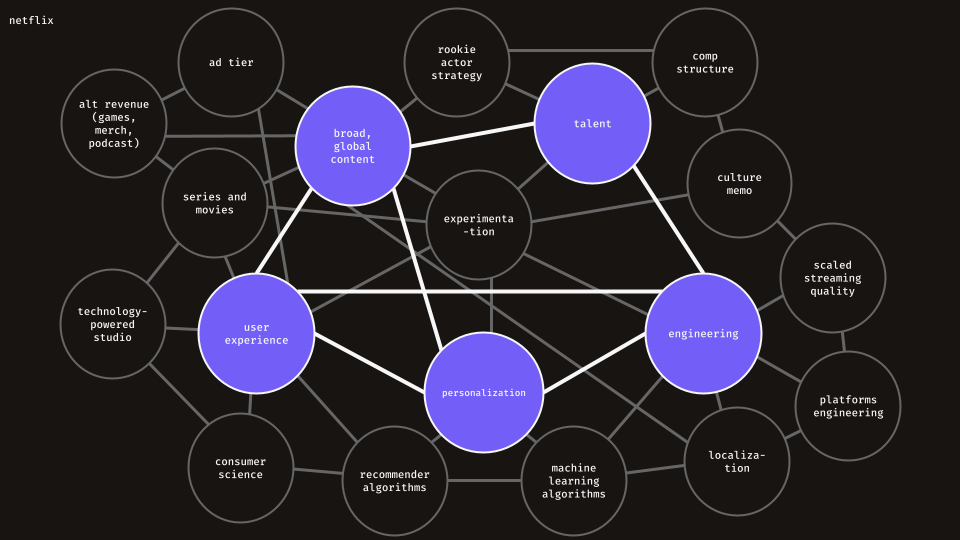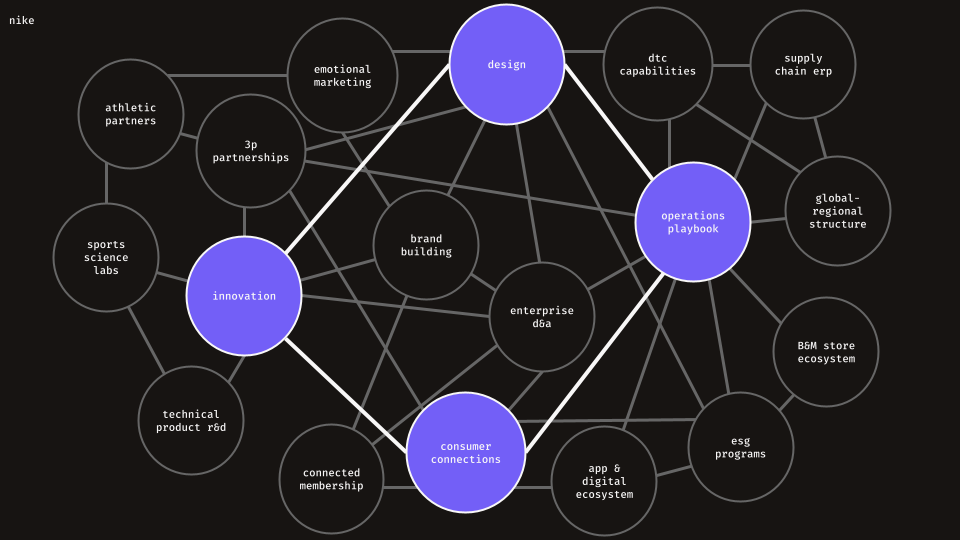❯ Strategy Map: Netflix & Nike
Category: Marketing
Series: Applied Marketing
Take a step into the world of strategy and you'll find ambiguity. My first adventures into creating and defining strategies felt like trying to grab the wind. I was the archaeologist, digging in the sand and reading hieroglyphs to find the what, why, and how of effective strategy. As I've matured and studied other successful strategists, I've learned it doesn't have to be this way.
Activity System Maps (shorthanded to Strategy Maps) are a recently discovered favorite exercise of mine. It pulls strategy from the theoretical to pen and paper. I first ran across it in Playing To Win. Strategy Maps are dead simple. Look at the activities your organization (or single team or outside firm) is doing and create an interlocking map of those activities.
Each activity is a circle, with the important focus areas (called Pillars) represented by larger circles than the supporting activities. The challenge comes from asking two questions: (1) are these activities congruent with each other, and (2) do they lead to a meaningful advantage? When you've checked both, you can move forward.
Let's take a look at Procter & Gamble's Strategy Map from the book.
PROCTER & GAMBLE: CAPABILITIES TO WIN

(right click for larger image)P&G's focus on brand-building, consumer understanding, GTM, and their two other Pillars enabled strategic advantage (in the early 2000s, at least). The other components of the Playing to Win Framework (winning aspiration, where to play, how to play, and management systems) are a great engine to a strong strategy: inspiring, choiceful, deliverable, and winnable.
Let's practice strategic maps with two totally different companies: Netflix (Entertainment + Technology) and Nike (Athletic + Retail).
NETFLIX: IMPORTANT INPUTS

(right click for larger image)Looking outside-in at a company, limited to free resources, is a different challenge. Unlike the P&G example, I didn't have access to their org. chart and intranet. So, I got my hands on everything from podcasts to YouTube videos and earnings reports. Ultimately, just a few resources ended up informing a bulk of the output: investor portals (particularly 10-Ks and earnings reports), brief news searches, executive team background and structure, job postings, and mergers-acquisitions-partnerships.
The exercise is both quantitative and qualitative; a mixed drink instead of a shot. I web-scrapped job data from Netflix (and Nike) to quantify what roles they were hiring for (Netflix's highest number of openings included Games and Finance; 40% of Nike's corporate openings were for Engineers) while looking at what the executive teams said in earnings reports to understand how these teams and activities were linked together.
NIKE: STRUCTURAL TABLE STAKES

(right click for larger image)Nike has a significant amount of similarities with Procter & Gamble. Depending on what category you play in, you'll have structural table-stakes: activities you have to invest in—or you risk getting outplayed. Drawing assumptions about Consumer Goods companies from this exercise, those would be a strong innovation pipeline, customer understanding, and efficient operations.
REFLECT WINNING ACTIVITY & INVESTMENT
Strategy Maps are a powerful alignment tool. In a workshop with Directors and VPs, we used it to clearly define a team's purpose and value-adding work within the department. Taking the time to ink out the team's activity map led to new discoveries and possibilities for additional, valuable work. We ended up recalibrating that team's focus, work, and deliverables. The role of Strategy Maps, at the team level or for the total organization, is to reflect the right activities to win in the marketplace. It guides decision-making, encourages alignment, and prioritizes investments.
Snapshot:
The days are long and the years are short. Cliché, new parent advice with a long fuse. Until recently, I've only felt the long days. Until recently, the fuse was still burning. The advice detonated two years later while sitting down to capture another snapshot. I realized I'm dealing with sand—far too many memories to catch, keep, and hold. I take the grains of chocolate fights, dino walks, zoo trips, draw next, and soccer practice and bottle them in photographs and videos. It doesn't beat being at the beach, but it will have to do.
Striving for better,
Justin Pichichero